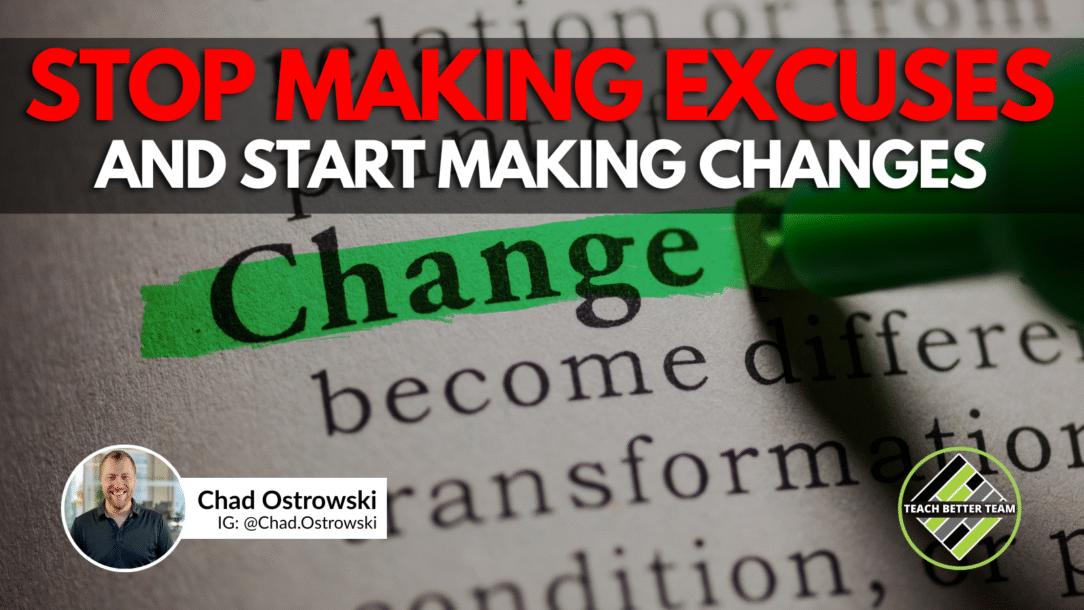I know that title sounds harsh, but let me explain.
As educators, we face numerous challenges daily. Whether it’s limited time, scarce resources, standardized testing pressures, or varying levels of student engagement, it’s easy to become overwhelmed and fall into the trap of making excuses for why things aren’t going as planned. However, dwelling on these obstacles doesn’t lead to improvement. Instead, we must shift our focus to what we can control within our classrooms, and take proactive steps to effect positive change.
Here are 5 things you can do to make small changes daily that lead to big results!
1. Focus on Things You Can Control
While external factors like policy decisions and administrative directives may be beyond our influence, the environment within our classrooms is largely within our control. By concentrating on aspects we can manage, like lesson planning, classroom management strategies, and student engagement techniques, we empower ourselves to make meaningful improvements. Reflect on your teaching practices and identify areas where you can implement changes that directly benefit your students. Put your time and energy into those things you can control, instead of stressing about the things you cannot.
2. Embrace A Growth Mindset
Adopting a growth mindset involves viewing challenges as opportunities for development rather than insurmountable obstacles. Instead of attributing setbacks to external factors, consider how you can adapt and grow in response. This perspective encourages resilience and fosters a proactive approach to problem-solving, ultimately leading to a more dynamic and effective teaching practice.
[scroll down to keep reading]3. Implement Small Changes
Significant transformations don’t happen overnight. Start by making small, manageable adjustments to your teaching methods or classroom routines. Over time, these incremental changes can lead to substantial improvements in student outcomes and overall classroom dynamics. Whether it’s incorporating new instructional strategies, reorganizing the physical layout of your classroom, or integrating technology to enhance learning, each step contributes to a more positive educational environment. This is at the core of the “Teach Better” mindset.
4. Don’t Do it Alone.
Don’t hesitate to reach out to colleagues, mentors, or professional learning communities for support and inspiration (You can even reach out to me anytime!). Sharing experiences and strategies with fellow educators can provide new insights and motivate you to implement effective changes. Collaboration fosters a sense of community and collective growth, enhancing the educational experience for both teachers and students.
5. Be Reflective.
Regular reflection on your teaching practices is crucial for continuous improvement. Assess the impact of the changes you’ve implemented and be willing to make further adjustments as needed. This iterative process ensures that you remain responsive to the evolving needs of your students and maintain a commitment to excellence in education.
You might be thinking that these sound simple, and they are. But in practice they can be challenging with the “hustle and bustle” of day-to-day teacher life. Giving yourself time to just reflect and purposefully make the decision to focus on these things is always the first step.
While it’s natural to encounter obstacles in the teaching profession, allowing excuses to hinder progress benefits no one. By focusing on what we can control, embracing a growth mindset, and committing to continuous improvement, we can create a more effective and fulfilling educational experience for ourselves and our students. Let’s stop making excuses and start making meaningful changes today.
About Chad Ostrowski
Chad Ostrowski is the co-founder of the Teach Better Team, and creator of The Grid Method. He is also a co-author of the Teach Better book. But Chad is a middle school science teacher at heart. He now travels the country sharing his story, working with teachers, schools, and districts to help them to reach more students.



